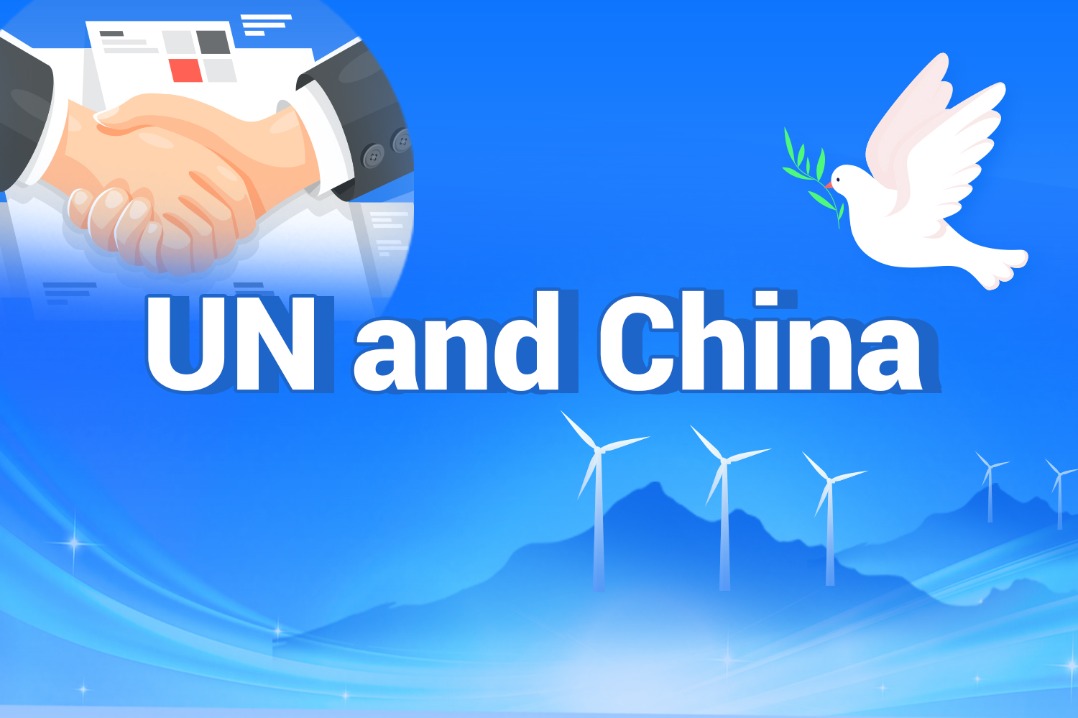Nation raises target for wind power installation
New goals of 1.3 TW by '30, 5 TW by '60 buoyed by rapid development in clean energy

China has drastically increased its national targets for wind power installations, aiming for 1.3 terawatts by 2030 and an ambitious 5 TW by 2060, a move hailed by the Global Wind Energy Council (GWEC) as critical for global climate efforts.
The "Beijing Declaration on Wind Energy 2.0", unveiled recently at China Wind Power 2025, sets a goal for China's cumulative wind power installed capacity to reach 1.3 TW by 2030, at least 2 TW by 2035 and a staggering 5 TW by 2060.
China's ambitious targets instill optimism that the world can meet its broader climate goals, said Ben Backwell, CEO of the GWEC.
The new goals mark a substantial increase from the initial Beijing declaration in 2020, which had projected at least 800 gigawatts by 2030 and 3 TW by 2060, he added.
The updated timeline is driven by China's rapid wind power development, which has consistently surpassed previous expectations, he said.
By 2024, China's cumulative wind power capacity reached 520 GW, a 147.62 percent increase from 2019, with annual new installations consistently exceeding 60 GW since 2020, according to statistics from the National Energy Administration.
Backwell said he was confident about China's ability to exceed its new targets, noting a historical trend of outperformance, lauding China's "incredible supply chain", which he attributed to consistent policy and market volumes that have fostered a robust "industrial ecosystem".
"One thing that I find exciting about China is that every time we set a target, we actually go beyond the target. China always outperforms its targets, and that gives us confidence that we can reach the bigger global target," he said.
"China's supply chain is extremely important, both in terms of components for the global wind energy and solar photovoltaic sectors."
"We're expecting to see diversification of the supply chain as production moves locally into those regions," Backwell said, envisioning a future where Chinese, European and other companies collectively contribute to globalizing industrial presence, creating jobs and enhancing energy security worldwide.
GWEC said that China's success demonstrates that renewables can win without subsidies against fossil fuels, with clean energy now directly competing with coal, leading to the peaking and anticipated reduction of emissions in the country.
"China is this kind of vast market where it was mainly coal, and we're now going to see coal replaced by renewables. That's going to show the rest of the world that this is possible," Backwell said.
Qin Haiyan, secretary-general of the Chinese Wind Energy Association, said China possesses vast wind energy resources with significant potential for development.
According to the association, Chinese wind turbine manufacturers have been accelerating their international expansion in recent years, having already exported equipment to 57 countries across six continents.
Seven of these manufacturers have either established overseas production facilities or are in the process of doing so, it said.
In recent years, wind power equipment manufacturers have also been stepping up efforts to introduce innovative AI-integrated solutions. These systems intelligently adjust power generation — producing more when electricity prices are high and less when low — which not only extends their design life span by five years but also boosts profitability.
Envision Energy, for example, has come up with the first global AI wind-storage integrated machine recently, which combines wind power generation and energy storage, functioning like a "smart electricity trader" and capable of increasing wind farm revenues by over 20 percent.
Reflecting on 2024, Backwell described it as a "massive year for China" where the country completely removed wind power subsidies and transitioned to a market-based system.
"The transition is a real success, proving the industry's resilience and competitive strength."
Backwell stressed the need to "globalize that story", accelerating renewable energy development in regions such as the Middle East, Africa and Latin America, alongside continued acceleration in Europe and other advanced economies.
GWEC Deputy CEO Rebecca Williams said that China's "learnings "from deploying wind at scale and driving technological advancements were crucial to "transfer them to other countries that also want and need wind power".
"China has deployed wind at scale, driven a lot of technological advancements," she said.
"It's been one of the countries that has really pushed forward wind power from its early history to the present day. What is really important now is that China can use these learnings and transfer them to other countries that also want and need wind power."
Today's Top News
- Stronger RMB points to resilience
- US defense policy act fuels Taiwan tensions
- Japan's nuclear ambitions call for high alert: Editorial
- China repatriates 952 telecom fraud suspects from Myanmar
- Chinese defense ministry criticizes latest US defense bill
- China sets a world record in maglev technology






























